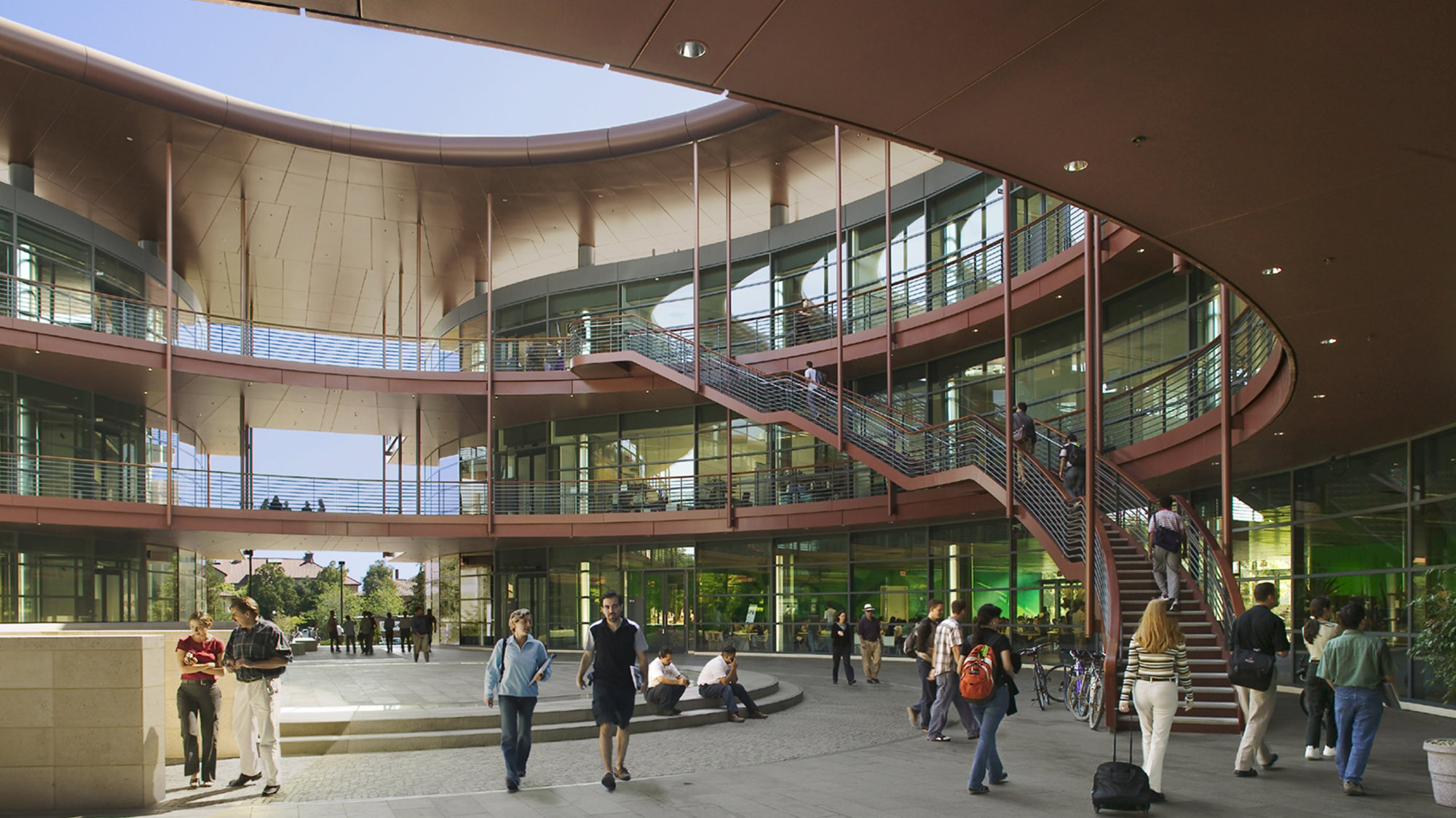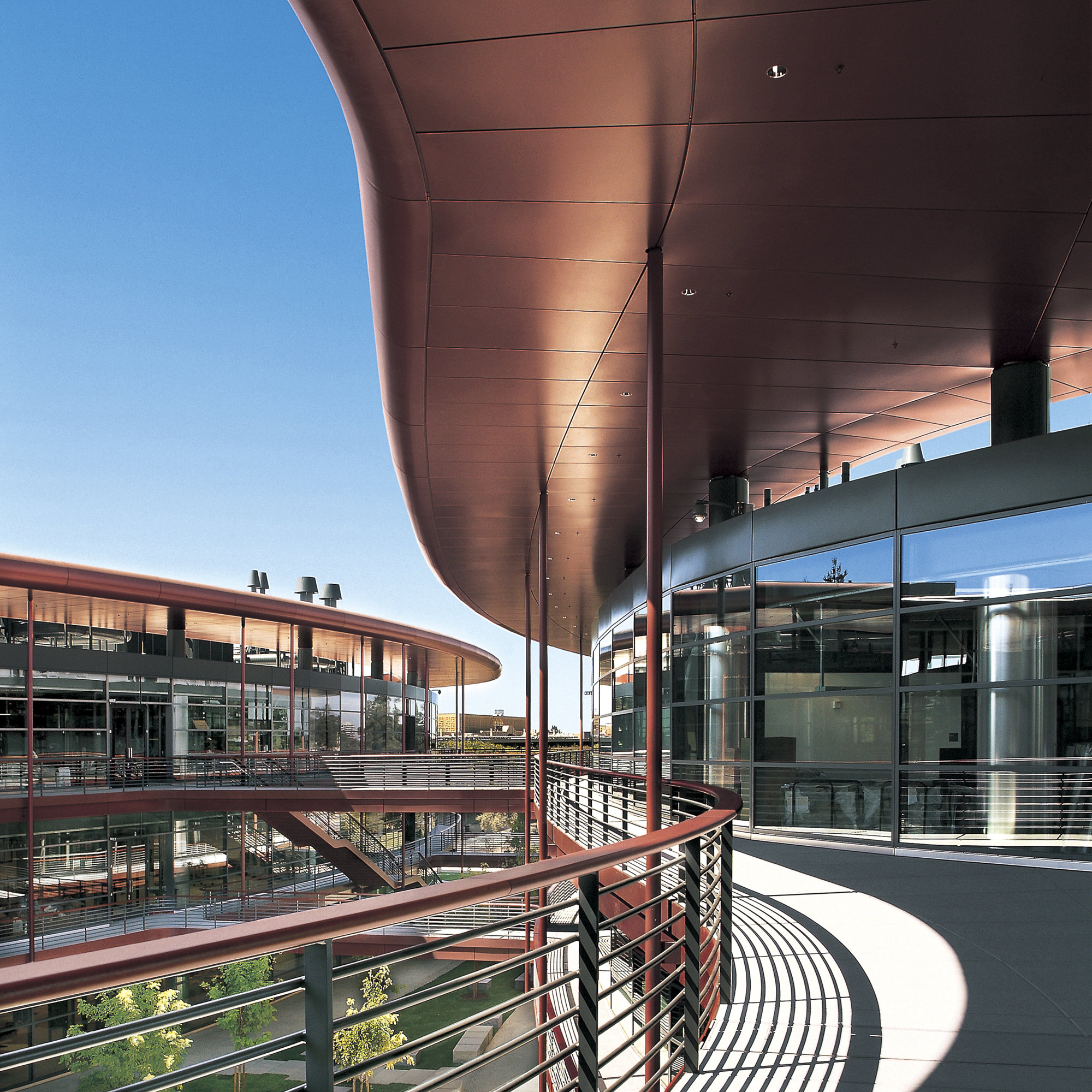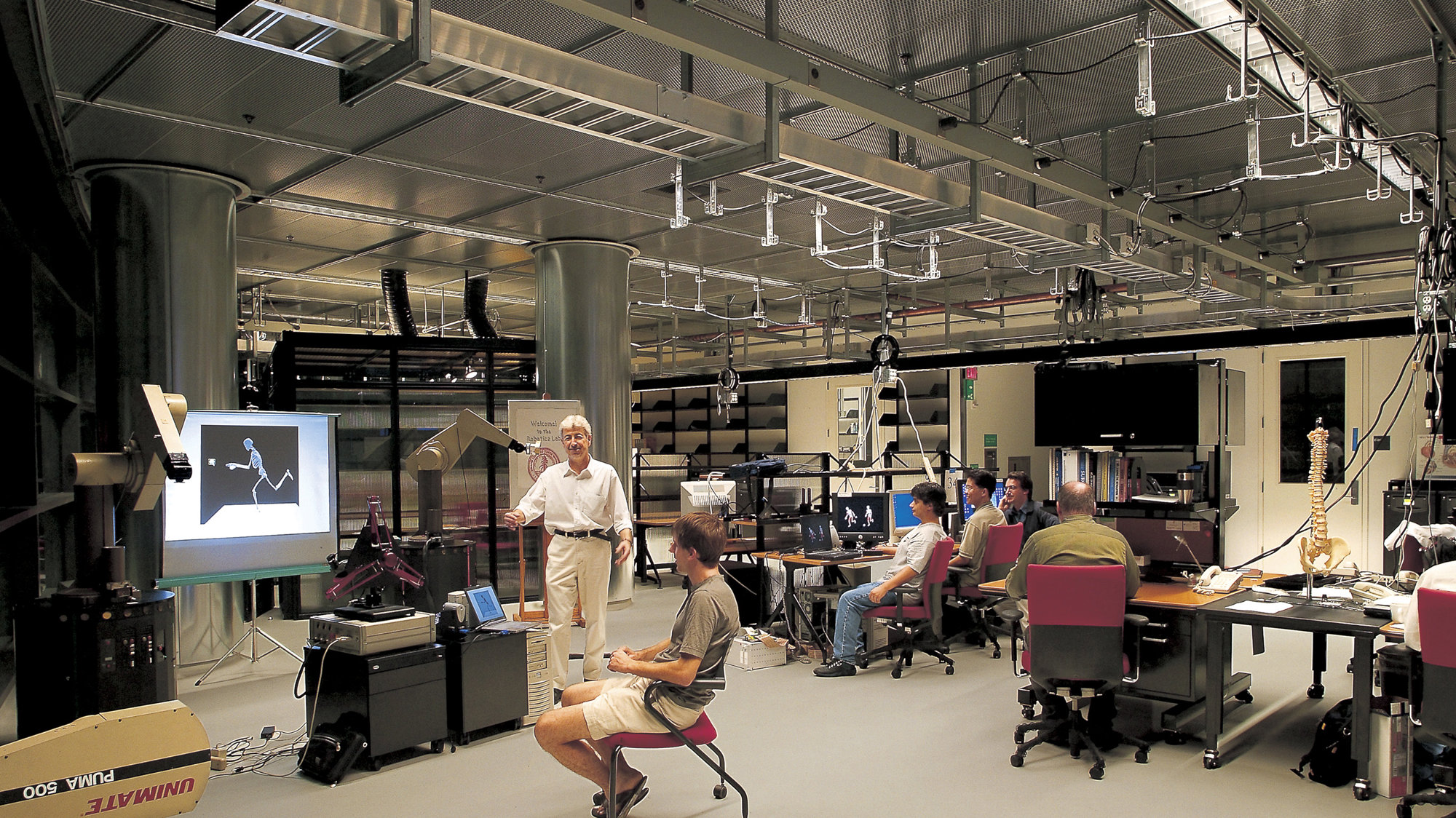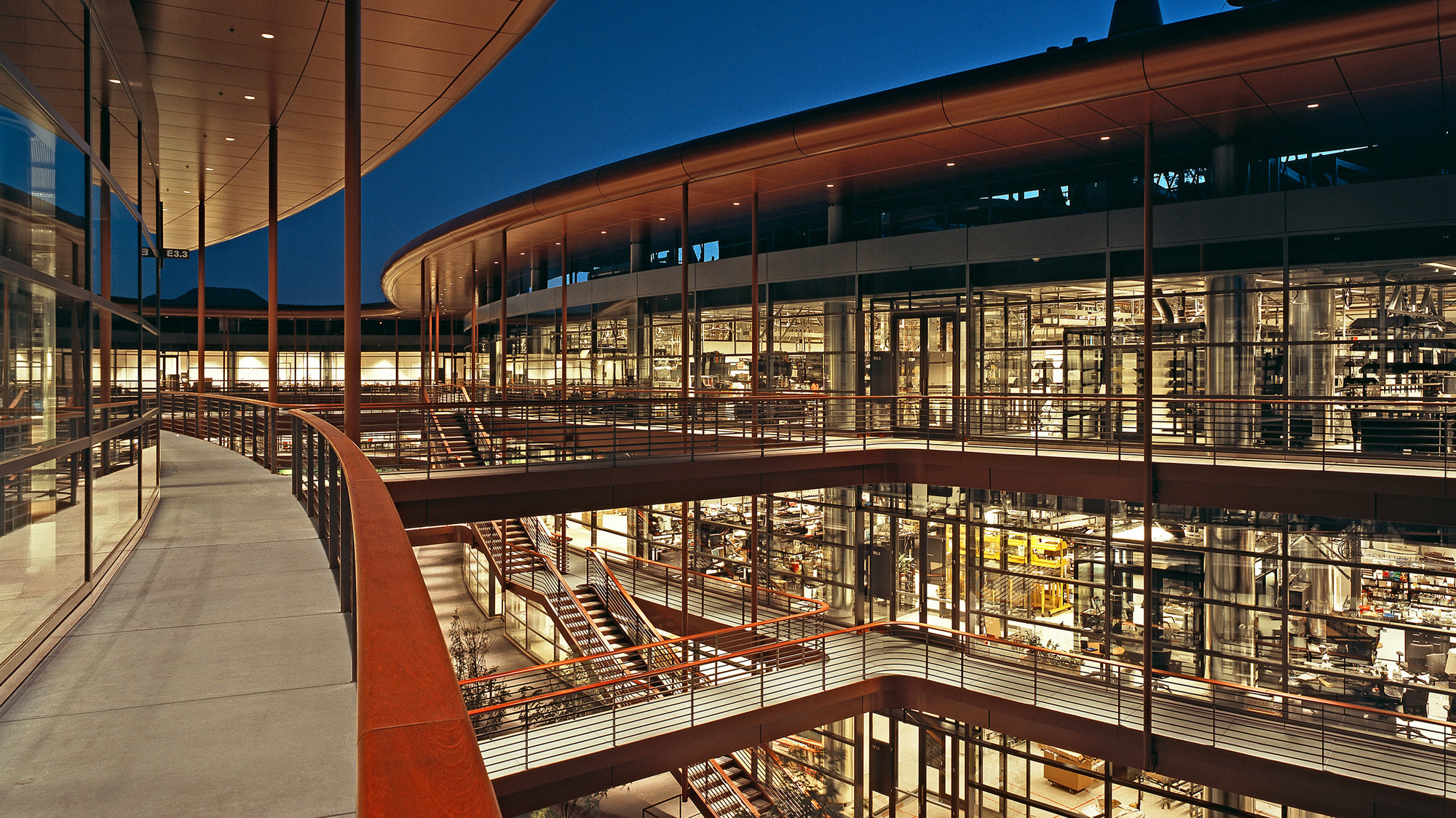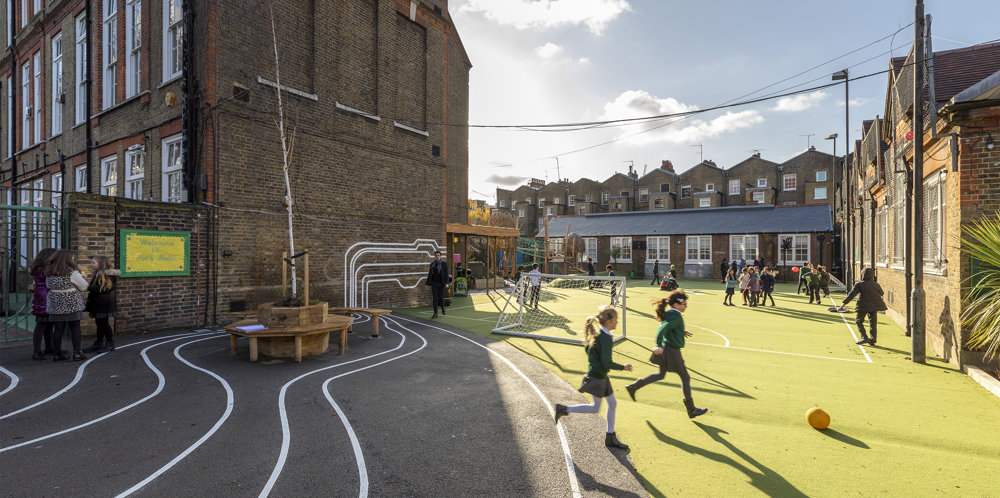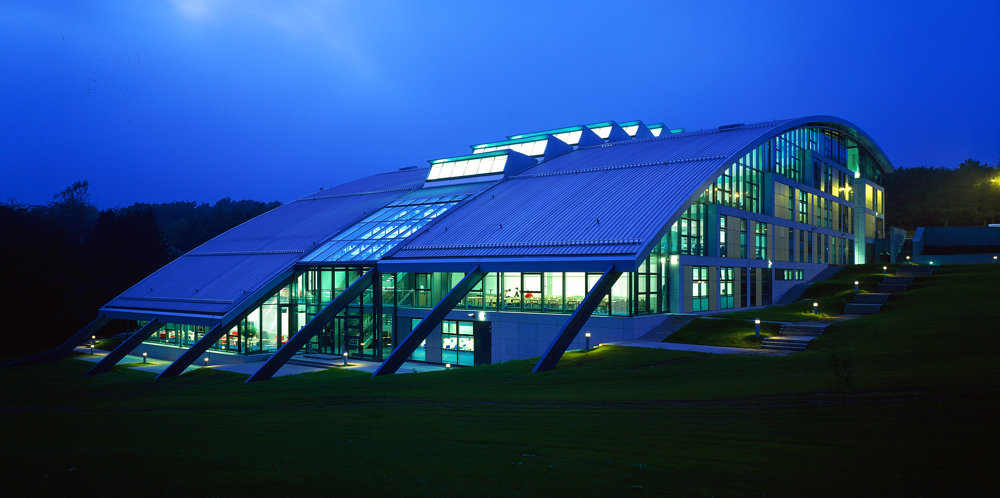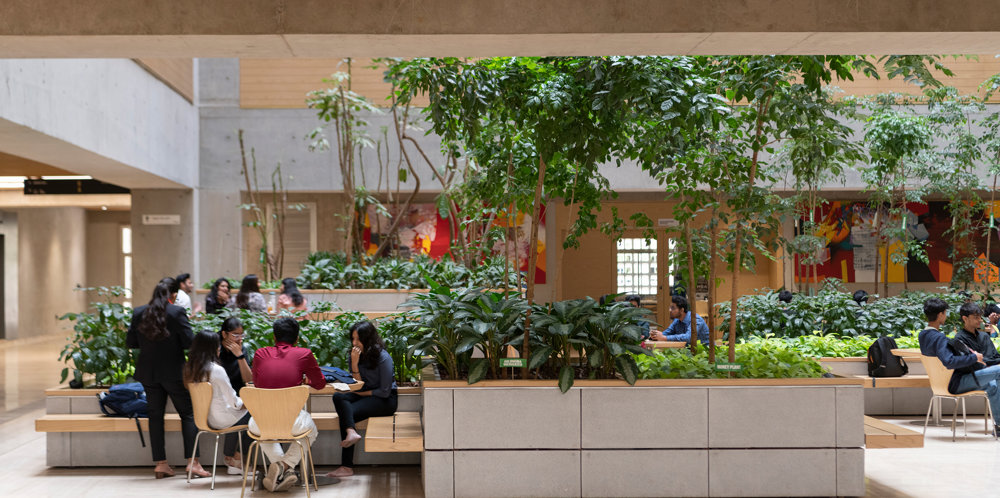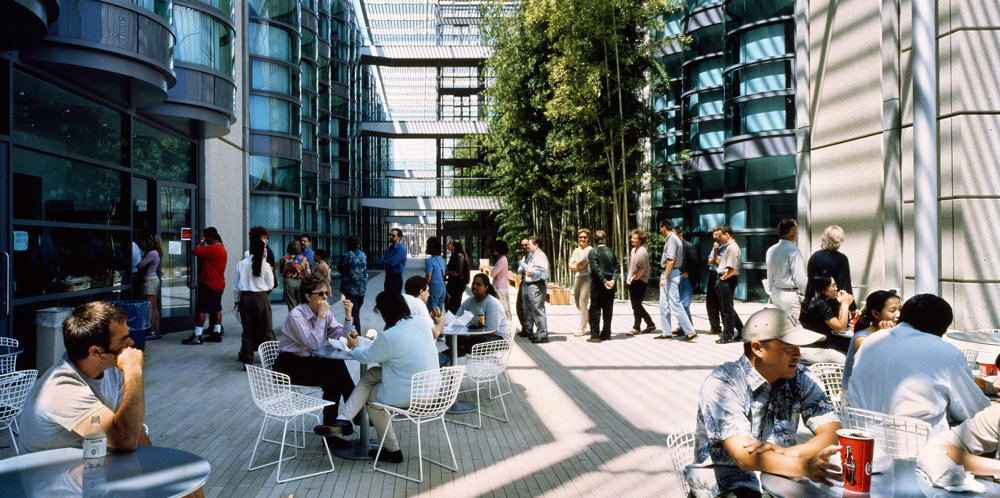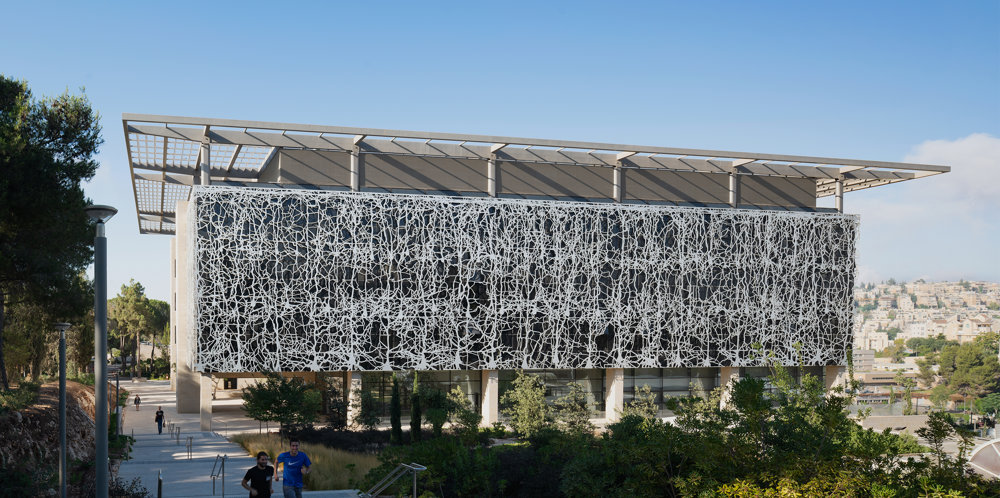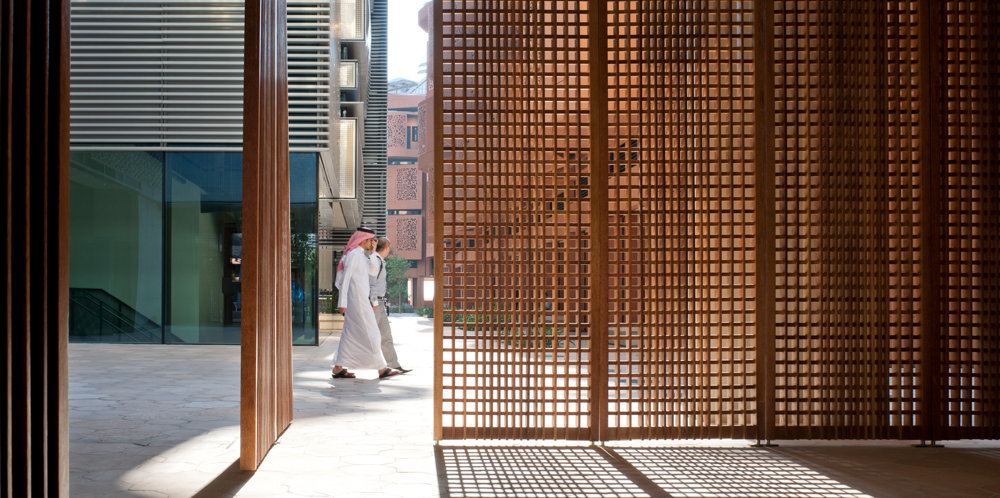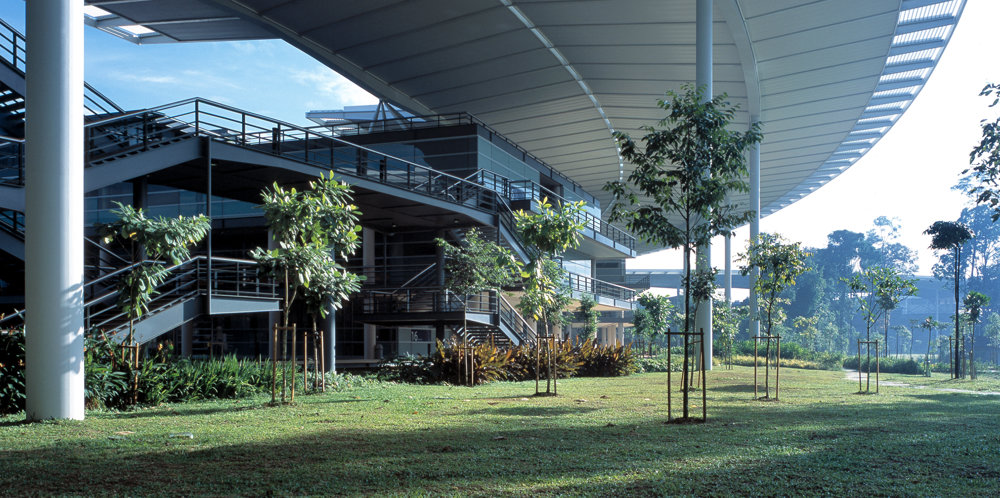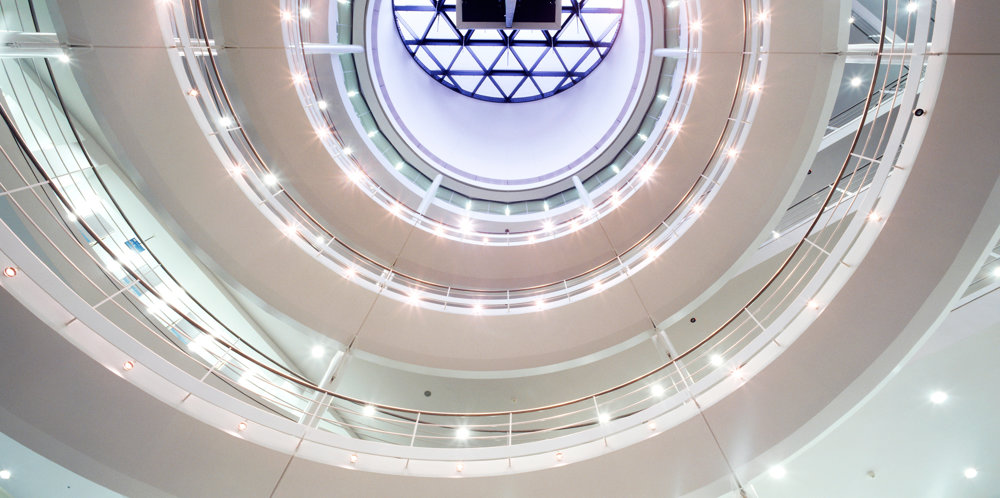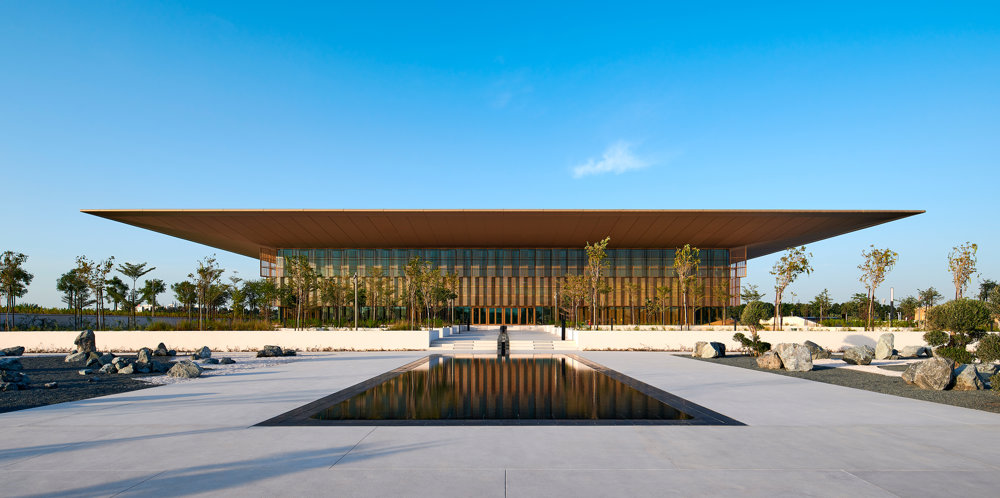The Clark Center continues the practice's investigations into the physical nature of the research environment, which began at Stanford with the Center for Clinical Science Research (CCSR). The CCSR reflected changes then taking root in research methodology and was designed to facilitate an inter-disciplinary approach and promote interaction between scientists. The Clark Center takes this formula a stage further, driven by the pioneering Bio-X programme, which has remodelled the landscape of science and technological research at Stanford. It is a building in which social encounters and impromptu conversations are regarded as integral to scientific endeavour.
Providing laboratory, office and social spaces for 700 academics from the Schools of Humanities and Sciences, Engineering and Medicine, the Clark Center is strategically located on the campus between the core science and engineering buildings and the medical centre. It acts as a social magnet for the university, encouraging students, lecturers and researchers from diverse disciplines to mix.
In contrast to the traditional laboratory facility with its closed rooms and corridors, the Clark Center is open and flexible: external balconies replace internal corridors and laboratory layouts can be reconfigured at will. All benches and desks are on wheels and can be moved to allow ad-hoc team formations in response to fast-evolving research needs. This versatility is further enhanced by workstations that plug into an overhead system of exposed services with flexible connections.
Externally, the building takes the form of three wings of laboratories that frame an open courtyard. Overlooked by balconies, the forum at the heart of the courtyard is used for exhibitions, concerts and other events, while the busy restaurant on the ground floor has become a social focus for the entire campus. A coffee bar on the third floor of the building is located to encourage people to pass by the laboratory spaces, to bump into colleagues and exchange ideas along the way.









